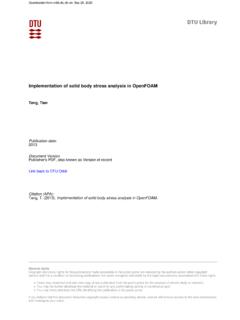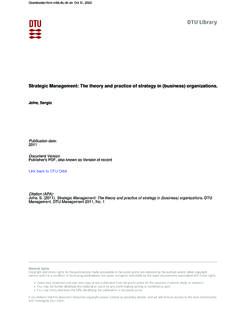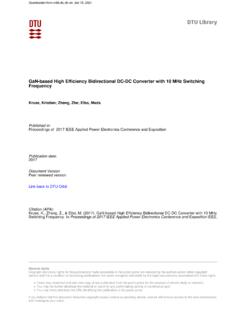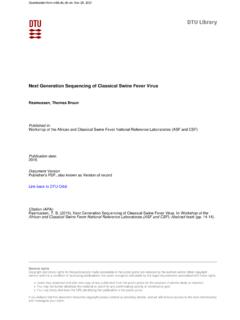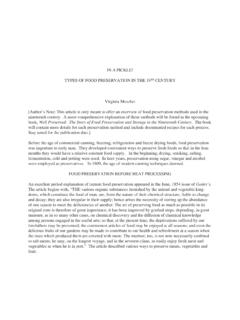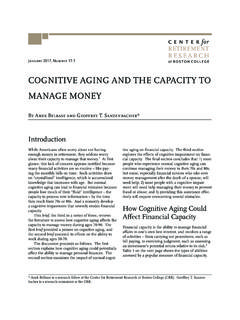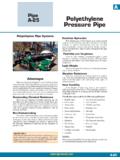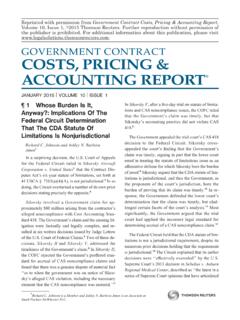Transcription of Reliability Databases: State-of-the-Art and Perspectives
1 Downloaded from on: May 13, 2019. Reliability databases: State-of-the-Art and Perspectives Akhmedjanov, Farit Publication date: 2001. Document Version Publisher's PDF, also known as Version of record Link back to DTU Orbit Citation (APA): Akhmedjanov, F. (2001). Reliability databases: State-of-the-Art and Perspectives . Denmark. Forskningscenter Risoe. Risoe-R, No. 1235(EN). General rights Copyright and moral rights for the publications made accessible in the public portal are retained by the authors and/or other copyright owners and it is a condition of accessing publications that users recognise and abide by the legal requirements associated with these rights. Users may download and print one copy of any publication from the public portal for the purpose of private study or research.
2 You may not further distribute the material or use it for any profit-making activity or commercial gain You may freely distribute the URL identifying the publication in the public portal If you believe that this document breaches copyright please contact us providing details, and we will remove access to the work immediately and investigate your claim. Ris -R-1235(EN). Reliability Databases: State-of-the-Art and Perspectives Farit M. Akhmedjanov Ris National Laboratory, Roskilde August 2001. Abstract The report gives a history of development and an overview of the ex- isting Reliability databases. This overview also describes some other (than com- puter databases) sources of Reliability and failures information, Reliability handbooks, but the main attention is paid to standard models and software packages containing the data mentioned.
3 The standards corresponding to collec- tion and exchange of Reliability data are observed too. Finally, perspective di- rections in such data sources development are shown. ISBN 87-550-2809-8. ISBN 87-550-2810-1 (Internet). ISSN 0106-2840. Print: Pitney Bowes Management Services Danmark A/S, 2001. Contents Preface 4. 1 Introduction 5. 2 Historical review 6. First generation of failure data source 6. Reliability data, second generation 6. Third generation 7. 3 Types of Reliability data 7. 4 Reliability data sources 8. Databases of equipment data 9. Databases of failure data 13. Handbooks (reference data) 15. Standard models of Reliability 16. 5 Standardisation of the data collection and exchange 17.
4 ISO standard: Gas and Oil - Collection of Reliability and Maintenance Data for Equipment 17. EDF standard for collection of Reliability and maintenance data for equipment (also called MCD Mode et Cause de Defaillance module failure mode and cause module) 18. Other related standards 18. 6 Related software products 23. Reliability Analysis Centre (RAC) products 23. Relex Software Corporation products 24. BQR Reliability Engineering Ltd. products 24. Aralia/SimTree program 26. RAM Commander 26. 7 Summary 26. 8 Acknowledgements 29. 9 References 29. Appendix 31. Ris -R-1235(EN) 3. Preface The present report has been written as part of the collaborative work between Ris National Laboratory and Ufa State Aviation Technical University (Russia).
5 4 Ris -R-1235(EN). 1 Introduction The fundamental works on Reliability theory have established the mathematical basis for the evaluation of the Reliability of complex systems computed from the knowledge of component Reliability and also for the construction of reliable sys- tems from relatively unreliable components. Today Reliability and safety analysis becomes an important part of each tech- nological system design or investigation process. Problems to be solved can be divided into two main groups: 1. Reliability and safety analysis of hazardous plants, comparing the values of their Reliability and safety parameters, increasing safety level of the plant, etc;. 2. prognoses of the values of Reliability and safety parameters for new plants which are to be constructed.
6 So, the necessity exists to obtain complete and exact data concerning equipment functioning, accidents and their consequences, maintenance operations and their costs that can be used for the solution of problems from the first group in the classification mentioned above. The best case would be if such information were collected from the same equipment (specific failure data) or from analo- gous equipment in similar conditions. In the case of the second group of problems we must use the information on equipment to be planned for implementation combined with expert judgements on new equipment Reliability parameters or using standard values or standard Reliability models ( MIL-217 or Bellcore). So, there is a need for Reliability data collection in relation to all types of components from the field records of installations and operations, in order to allow us to analyse, compare, or predict the Reliability levels of complex sys- tems.
7 We can define at least three categories of users of Reliability databases [1]: - risk and Reliability analysts for analysing and predicting a Reliability of complex systems;. - maintenance engineers for measuring and optimising the maintenance per- formance;. - component designers for analysing and optimising the component perform- ance. All of these specialists need different types of data. The risk analyst needs to compute system availability or probability of mis- sion success or failure. For this he needs to know the availability of components and failure rates. Availability can be estimated from failure on demand if down- time has been properly included in the database . The maintenance engineer needs to measure maintenance performance.
8 The operational data conflates the effects of maintenance and the intrinsic Reliability of the component. Also he wants to know what the failure behaviour of the component would be in the case it were not maintained. The component designer is primarily interested in failure mechanisms that re- veal the weak points of design. Hence he is interested in distinguishing failure modes according to failure mechanisms. Where this is not possible, engineering knowledge is used to infer failure mechanisms from other information. Ris -R-1235(EN) 5. The scope of this survey is description of the data sources that can be used for the analysis of Reliability of hazardous industrial plants and installations. 2 Historical review Collection of necessary empirical data for the prediction of future event prob- abilities has a long history [2].
9 Architects used design rules of thumb to capture experience of the ages and thereby produce buildings of incredible longevity and Reliability . At least before the 17th century the safe passage events and mor- tality events were collected and analyzed to uncover prospective underlying classes; then associated class attributes formed a basis for the insurance indus- try. One of the first designs for which Reliability and risk databases may have been developed were that of the automobile and aircraft when they were converted from a plaything of the rich to means of transport for a broad spectrum of popu- lation. Such transport must be reliable and safe, and this fact becomes a basis for gathering of maintenance statistics and attempts at redesigning or replacing of frequently failed items.
10 First generation of failure data source The earliest broad-based published source of Reliability data may well have been the Martin Titan Handbook [3]. This widely distributed source contained ge- neric failure rates on a wide range of electrical, electronic, electromechanical, and mechanical parts and assemblies'. The Titan Handbook was the first known source to standardise the presentation of failure rates in terms of failures per 106 hours eliminating the necessity for conversions. Reliability data, second generation The Titan Handbook sets the stage for more ambitious programs to collect and organise Reliability data. The brightest examples of these efforts are: 1) MIL-Handbook-217 [4]. 2) Failure Rate Data Bank (FARADA) [5].
